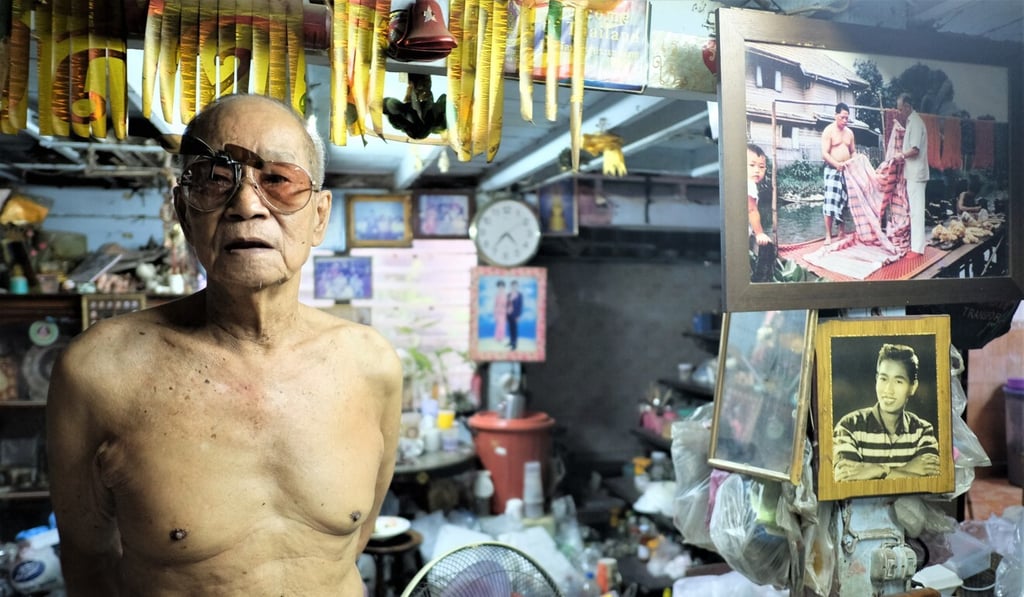Two worlds collide at a Bangkok shanty town hunkered in the shadow of glitzy malls, five-star hotels and condominiums
- Huddled next to a fetid canal where older residents used to swim, Baan Khrua is a jumble of shacks and decaying wooden houses in the shadow of wealth
- Once a centre of silk weaving – thanks to American businessman Jim Thompson, who lived nearby – it fell on hard times and illegal drugs took root

Times have changed for Manasnan Benjarongchinda, a Chinese-Thai octogenarian known as Uncle Aood in the shanty town of Baan Khrua, in the heart of Bangkok.
He started making silk textiles when he was 13 and spent nearly seven decades dyeing, weaving and spinning threads. These days, he mostly whiles away the time in his cluttered, low-ceilinged home, which doubles as a showroom for his homespun fabrics.
The elderly man rarely has visitors any more, so he wears only a traditional plaid sarong as he reminisces about the past. “When I was young we bathed in the canal and washed silk in it. The water was still clean,” he recalls. “There were orchards around here and children filched coconuts and rose apples from trees. But now it’s not like that.”

His community, in the northern part of a slum-like neighbourhood that sprawls along the waterway, has changed over the years, but the city around it has changed far more.
The entire opposite bank, once the site of those orchards, has been taken up by fancy hotels and upscale condominiums. At a nearby intersection, a Tesco Lotus superstore stands where an old street market once did.